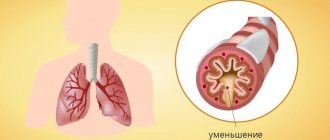Halitosis or bad breath is a symptom of pathological processes occurring in the body.
According to statistics, in 80% of cases, the cause of halitosis is dental problems, 10% are diseases of the ENT organs, and 10% are diseases of internal organs.
Having felt an unpleasant odor coming from their mouth, people most often turn to a dentist for advice. Often, upon examination, it is discovered that the source of the stale smell is a tooth rotting under the crown.
The main reasons why a tooth under a crown begins to smell bad
Wearing a prosthesis longer than expected . Over time, when wearing a denture for a long time, the gum tissue atrophies, and the area of the neck of the tooth is exposed. A loose connection of the crown to the gum causes the formation of a gap into which food debris gets trapped. It is impossible to remove accumulated substrate from under the crown using traditional methods: toothbrush, rinsing. As a result, an environment favorable for the growth of bacteria is formed under the crown, which in the course of their life emit foul-smelling sulfur dioxide gases.
Violation of the seal between the crown and the tooth . The reason is most often the incorrect installation of the prosthesis or the resorption of the material that was used to fix the artificial crown to the supporting tooth. Pathogenic microflora, penetrating into the formed cavities, causes secondary caries and inflammation of the gums.
If the crown is metal-ceramic, then under the influence of salivary secretions and oxygen in the air, the metal in its composition undergoes oxidation, which causes an unpleasant odor. In addition, the resulting oxides irritate the mucous membranes of the gums and can provoke allergic reactions.
Lack of tooth protection after grinding . One of the stages of preparation for prosthetics is preparation - removal of the enamel coating, which protects tooth tissue from mechanical damage and the action of microbes. If, before installing a permanent prosthesis, the ground tooth is not covered with a temporary crown or treated with cement, then bacteria settle on it and continue their destructive activity under the prosthesis.
Violation of the technological process of manufacturing and installing a prosthesis . If a crown is installed incorrectly, regardless of the reason (insufficient experience of dental technicians and orthopedists, use of low-quality materials), soft tissue injury occurs, followed by infection and the development of inflammation.
Poor oral hygiene . Artificial structures - dentures require special care and cleaning. If you neglect the rules of hygiene, pathogenic microorganisms begin to actively multiply, causing putrefactive processes.
Poor quality dental treatment . One of the main conditions for successful prosthetics is the absence of infection in the oral cavity. If teeth that are subject to prosthetics have a defect in filling the dental canals, a granuloma or cyst filled with pus may form at the apex of the root.
When teeth affected by caries appear under the crown, the decay process continues and ends with complete destruction and death of the tooth.
Causes of liver cirrhosis
One of the most common causes of liver cirrhosis, especially in men, is alcohol abuse.
Often organ fibrosis develops as a result of other diseases of the hepatobiliary system - viral and toxic hepatitis, obstruction or inflammation of the biliary tract, cholelithiasis. The following pathologies can also serve as an etiological factor:
- parasitic infestation;
- venous congestion in the vessels of the liver;
- portal hypertension;
- autoimmune diseases;
- severe right ventricular heart failure;
- secondary or tertiary syphilis, brucellosis;
- inherited metabolic disorders;
- long-term use of medications, for example, Iprazide, anabolic steroids, Isoniazid, androgens, Methyldopa, Inderal, Methotrexate;
- mushroom poisoning, ingestion of industrial poisons, heavy metal salts and other toxins.
Symptoms of tooth decay under the crown
The first sign of an inflammatory process under a prosthesis is not pain, as many people think, but an unpleasant odor. This happens because at the stage of preparation for prosthetics, the tooth is usually depulped, that is, the neurovascular bundle, which is responsible for sensitivity, is removed.
- An unpleasant taste first appears in the mouth, then a putrid odor is added, which cannot be masked by any chewing gum or mouthwash.
- The patient discovers a gap between the crown and the gum, where food debris gets in, which becomes a breeding ground for microbes.
- Often, inflammation of the gums develops near the tooth with the formation of soft tissue swelling.
- If the tooth has not been pulped, then severe pain is present.
- Blackening of the tooth under the crown.
All these symptoms indicate an advanced putrefactive process in the tooth covered with a crown. You should immediately seek medical help from a dentist.
Ignoring the problem leads to dire consequences:
- formation of a purulent cyst at the apex of the root;
- complete tooth destruction;
- the formation of periostitis or gumboil;
- spread of purulent infection along with blood or lymph flow to other organs.
general characteristics
A pathological disorder of taste perception is called dysgeusia.
Such a “perversion” of taste sensations can be a sign of the development of neurological, hormonal, mental disorders and other diseases, including those caused by a deficiency of certain substances in the body. If the taste of the products remains unchanged, this diagnosis can be excluded. In this case, we are talking about the temporary persistence of an unusual taste in the mouth, and most often the problem disappears when the cause of its appearance is eliminated.
Why does the taste of blood appear in the mouth?
Inflammation of the gums under the denture is manifested not only by a specific smell from the mouth, but also by the appearance of a blood taste.
Inflammation of the gums around the crown is called gingivitis. Often the cause of gingivitis is rubbing of the mucous membrane due to the irregular shape of the prosthesis. For example, when the lower edge of the crown extends too deeply behind the gum, which leads to injury and bleeding. Blood is an excellent breeding ground for pathogenic microbes that readily multiply, causing inflammation of the soft tissue around a tooth with a poorly fitting denture.
Broken prosthesis that goes unnoticed. The bridge structures scratch the mucous membrane, leaving cuts and abrasions on it.
Bleeding is also the result of poor-quality tooth treatment before prosthetics. Against the background of inadequate filling of the dental canals or incomplete removal of the pulp, pathogenic microbes inside the tooth provoke a purulent process, which is accompanied by tissue destruction with the release of blood.
Diagnostics
In order to determine the cause of sour taste in men , it is necessary to undergo a comprehensive examination, which will exclude or confirm certain diseases. Comprehensive diagnostics includes the following activities:
- esophagogastroduodenoscopy (most informative for diagnosing gastric ulcers ;
- gastric pH-metry;
- ultrasound examination of the abdominal organs, including the liver and gallbladder;
- ultrasound examination of the pancreas;
- biochemical blood test, including liver tests and assessment of pancreatic enzyme levels;
- general clinical blood test;
- assessing blood glucose levels;
- consultation with a neurologist, endocrinologist, gastroenterologist, hepatologist;
- analysis for glycosylated hemoglobin.
What to do to get rid of the smell
Some patients, even having discovered that the cause of such bad breath was a tooth rotting under the crown, for some time they hope to cope with the problem on their own: they rinse their mouth with decoctions of chamomile, calendula, and sage.
Antibacterial rinses and traditional medicine give a temporary effect and are not able to eliminate the root cause of the problem. In addition, frequent rinsing can disrupt the normal microflora of the oral cavity, when beneficial microorganisms die along with harmful ones.
It should be understood that no home remedies will stop the inflammatory process in the tooth, which will only progress and lead to its complete destruction and loss.
Treatment tactics vary and depend on the following factors:
- stages of tooth decay;
- the degree of spread of the inflammatory process to soft tissues;
- condition of root canals.
Treatment options for a tooth under a crown:
If the tooth stump has been preserved and has not undergone a carious process, the layers inside the crown are cleaned and, depending on the condition, it is either replaced with a new one or returned to its place after restoration.
When the upper part of the tooth is destroyed, but the roots are healthy, the stump inlay method is used. This is an orthopedic structure with “legs” that are fixed in the canals of the tooth, and an artificial crown is installed on top.
If the putrefactive process has gone too far and the tooth is completely destroyed, it is removed. As a rule, with long-term inflammation, the soft tissues surrounding the problematic tooth also suffer. Therefore, before proceeding with prosthetics, periodontitis is treated. There are two ways to restore a lost tooth: implantation or a bridge.
When choosing a dental clinic where you plan to get dentures, be sure to find out whether the medical institution provides guarantees for the treatment performed. If damage to the prosthesis occurs during the warranty period due to a medical error, treatment and restoration of the orthopedic structure is carried out free of charge.
Cholestasis in pregnant women and children
Such forms of pathology as cholestasis during gestation and childhood deserve special attention.
In these cases, the mechanism of development of disorders and symptoms have their own characteristics. Manifestations of cholestasis in pregnant women are observed in the third trimester. Skin itching can be pronounced or cause virtually no discomfort. Scratching is most often observed on the arms, legs, and forearms. Jaundice occurs in only one in ten women and usually goes away on its own two weeks after birth. However, with severe jaundice and early onset (before the 25-27th week of pregnancy), it may increase the risk of complications during childbirth.
Childhood cholestasis can be observed both from the first months of life and appear at an older age. In infancy, intrahepatic cholestatic syndrome caused by congenital metabolic disorders, idiopathic neonatal hepatitis and bile duct malformations are more common. Causes of cholestasis can also be infections, toxic organ damage, liver cirrhosis, cardiovascular failure, pancreatic tumors, parasitic lesions, sclerosing cholangitis.
The danger of cholestasis is that it develops in children in a latent form. Symptoms depend on the age at which the disease began and the characteristics of the body.
What to do if the tooth under the crown has completely rotted
One type of reconstruction of a severely damaged tooth is a stump inlay. It is a product that replicates the root system of the tooth. A crown is placed on the upper part of the structure protruding above the gum. The method is used only if there are healthy, undamaged roots.
Stump inlays are made of chrome-plated cobalt or alloys with precious metals (gold, silver). Preference is given to gold, as its shade resembles the color of natural enamel. The silver tab, despite its antibacterial effect, is used less frequently, since it shows through the crown as a dark spot.
If the roots are completely rotten and cannot be restored, the tooth is removed.
The choice of one or another method of dentition restoration in case of tooth loss remains with the patient, and his wishes regarding the material, type of structure, as well as financial capabilities are taken into account.
What to do if a crown falls off
The reasons why a crown falls off a tooth can be very diverse:
- With prolonged use, the cement on which the crown was strengthened dissolves.
- Secondary caries, leading to the destruction of the tooth stump and a violation of the tightness of the connection between the tooth and the crown.
- Damage to the denture due to heavy load when chewing solid food.
You cannot try to put the crown in its original place on your own and continue to use the prosthesis. This is very dangerous, since the crown, unexpectedly jumping off the tooth, can enter the windpipe and cause suffocation.
It is impossible to properly strengthen the prosthesis at home; only a dentist can do this.
The dentist, after examination and diagnosis, will decide what to do next.
There are several options:
- If the crown is only slightly damaged, it can be repaired and replaced.
- In case of significant damage or if the service life of the orthopedic structure has come to an end, the prosthesis must be replaced.
- If the cause of crown loss is caries, the tooth is treated, and then a decision is made about the possibility of prosthetics.
- If a tooth is severely damaged and cannot be restored, it is removed, and then implantation or a bridge is installed.
Rules for caring for fixed dentures
High-quality care of crowns in compliance with all hygienic rules can significantly extend the service life of the product.
Since a regular toothbrush is not able to fully clean all hard-to-reach places, additional care products are used to better treat teeth and dentures.
Dental floss (floss). This is a special thread made of nylon, silk, acetate fibers with a flat or round cross-section, designed to clean interdental spaces. To enhance the effect, they are often impregnated with antiseptics.
Floss - disposable toothpicks with a thread on a frame are used for the same purposes as floss.
Bundle brush . The interdental spaces are cleaned using a brush-brush with many long bristles. Dentists recommend alternating cleaning the spaces between teeth with brushes and dental floss, since some of them (floss) are better suited for narrow gaps, and a tuft brush does an excellent job of cleaning wide gaps.
An interproximal brush with a brush is designed to treat hard-to-reach areas between the crown and adjacent teeth.
An irrigator is a device for cleaning the oral cavity using a water jet supplied under pressure. A pulsating stream of water penetrates into the most inaccessible places, cleanses the surface of teeth and artificial dentures from plaque and food debris in the gum pockets and interdental spaces.
Dentists do not recommend using wooden toothpicks at all. Wood particles get stuck between the teeth, begin to rot and cause inflammation. In addition, toothpicks can easily injure your gums without even noticing it.
Help before diagnosis
In most cases, the following help to get rid of the symptom:
- keeping the oral cavity clean;
- regular and balanced nutrition;
- cessation of smoking, alcohol abuse;
- drink enough fluid during the day;
- moderate activity after meals.
You can temporarily remove the taste by thoroughly brushing your teeth, rinsing your mouth with water and lemon juice or baking soda, chewing gum, or special mouth fresheners.
Preventive crown care
The prosthesis installed in the mouth is influenced by food chemicals, saliva, and microbes. Without systematic proper care of crowns, they become covered with plaque, lose their original color, and become a breeding ground for infection.
Prevention of the development of infection in the oral cavity, especially under fixed dentures, involves strict adherence to the following hygiene rules:
- Teeth should be brushed at least 2 times a day: morning and evening, and if possible, more often. Brushing technique: movements of the toothbrush are performed from the gum to the top of the tooth at an angle of 45°. The procedure time is at least 3 minutes.
- Rinse your mouth with clean water after every meal.
- For better cleaning of teeth and dentures, it is recommended to actively use additional devices: interproximal and tuft brushes, dental floss.
- Use irrigators. To rinse the oral cavity, various agents with an antibacterial effect are used that destroy pathogenic microorganisms.
A well-installed prosthesis with good care will reliably and for a long time protect the tooth from external factors. But if a tooth infection does occur and decay begins, without proper treatment the pathological process will only progress, which will lead to serious complications. To eliminate the consequences, long-term treatment with significant financial costs will be required.
Clinical researches
The effectiveness of various ASEPTA mouth rinses has been repeatedly proven clinically.
For example, it has been clinically proven that the two-component mouth rinse ASEPTA ACTIVE more effectively combats the causes of inflammation and bleeding compared to single-component rinses - it reduces inflammation by 41% and reduces bleeding gums by 43%.
Sources:
- The role of anti-inflammatory rinse in the treatment of periodontal diseases (L.Yu. Orekhova, A.A. Leontyev, S.B. Ulitovsky) L.Yu. OREKHOVA, Doctor of Medical Sciences, Prof., Head of Department; A.A. LEONTIEV, dentist; S.B. ULITOVSKY, Doctor of Medical Sciences, Prof. Department of Therapeutic Dentistry of St. Petersburg State Medical University named after. acad. I. P. Pavlova
- The effectiveness of the use of Asept “adhesive balm” and Asept “gel with propolis” in the treatment of chronic generalized periodontitis and gingivitis in the acute stage (Municipal Dental Clinic No. 4, Bryansk, Kaminskaya T. M. Head of the therapeutic department Kaminskaya Tatyana Mikhailovna MUZ City Dental Clinic No. 4, Bryansk
- The effectiveness of complex therapy in the treatment of periodontal diseases. (Department of Periodontology of the SF State Budgetary Educational Institution of Higher Professional Education MGMSUIM.A.I. Evdokimova. Moscow.) Nemeryuk D.A. - Associate Professor, Candidate of Medical Sciences, Dikinova B.S. - Postgraduate Student of the Department of Periodontology of the SF Tsargasova M.O. - Postgraduate Student of the Department periodontology SF Yashkova V.V. - postgraduate student of the Department of Periodontology of the SF Department of Periodontology of the SF State Budgetary Educational Institution of Higher Professional Education MGMSUIM.A.I.Evdokimova. Moscow







